The following review first appeared in the October 2017 issue of The Spectrum Monitor magazine.
Earlier this year one of my readers in Australia noted the addition of the Digitech AR-1780 to the product offerings of the Australia and New Zealand-based retailer Jaycar.
One thing I’ve learned over the years is that there are few in-country sources of shortwave radios in both Australia and (especially) New Zealand. Jaycar, in a sense, represents what RadioShack and The Source have offered in the US and Canada––a more accessible electronics retailer with some shortwave radio selection.
Jaycar sells radios badged with the name Digitech. Unfortunately, none of Jaycar’s recent additions––and there have been a few––have been enormous hits among serious radio enthusiasts. The company currently offers five Digitech models: the AR1736 ($18.95 AUD), AR1721 ($25.95 AUD), AR1748 ($129.00 AUD), AR1945 ($159.00 AUD), and now the AR1780 ($129.00 AUD).
The Jaycar models are either very cheap sub-$30AUD digital portables, or pricier large portables with a form factor similar to the Grundig S350DL and S450DLX, or the C.Crane CCRadio-SW. The new AR1780 fits somewhere between––a compact portable that promises a compliment of features tailored for the radio enthusiast.
In this review, we’ll take a close look at the AR1780, starting with its feature set.
Features
What appeals to me about the Digitech AR1780 is the amount of features provided by such a compact, traveller-friendly form factor.
Here’s a comprehensive list of the AR1780’s features and specs:
Frequency coverage:
- FM 87.5 – 108 MHz
- MW 522 – 1620 kHz or 520 – 1710 kHz
- SW 1711 – 29,999 kHz
- LW 150 – 450 kHz
- AIR 118 – 137 MHz
Modes:
- FM (including RDS)
- AM
- Single Sideband
Selectable Bandwidths:
- AM mode: 6, 4, 3, 2.5, 2, & 1.81 kHz)
- SSB mode: (4, 3, 2.2, 1.2, 1 & 0.5 kHz)
Convenient features:
- Sleep timer
- Clock/Alarm
- Thermometer
- Signal strength meter
- Squelch control
- Voice/Music selectable audio filter
- Dedicated fine tune control
- Headphone jack (3.5 mm)
- Key lock button
- Key beep on/off
- Tuning knob and tuning step up/down buttons
- Display button cycles through alarm, time, temperature, and signal strength
- FM mono/stereo selection
- Backlight button
- Selectable 9/10 kHz regional MW tuning steps
- Flip-out backstand
Power source: 7 VDC or 4 x AA cells (not included, can be internally charged if NiMH cells)
Antenna: Built-in telescopic and 3.5mm socket for external antenna
Weight: 253g/0.56 lbs (excluding batteries)
Dimensions: 150(W) x 95(H) x 30(D)mm
Operation Manual
The Digitech AR1780 ships with a small user manual. In fact, other than the hand strap, the user manual is the only additional item in the box besides the radio itself.
The manual is quite thin––slightly smaller in height and width than the AR1780––and only contains about eight front-and-back mini pages. Although readable, it’s littered with grammatical and punctuation errors. While a manual is certainly a welcome reference item with this feature-packed radio, this manual comes up short, lacking detailed explanations of features and even leaving some out altogether: it does not, for example, offer any explanation on the use of the excellent squelch control, nor does it fully explain the station memory set on multiple memory pages––! Rather unfortunate, as these features deserve a clear explanation.
First impressions
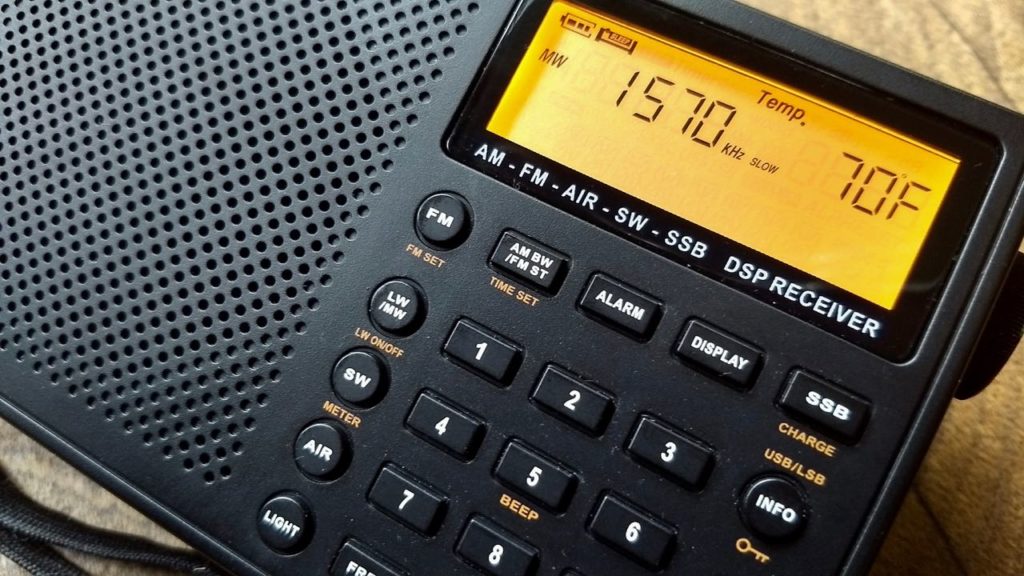
The Digitech AR-1780, like many DSP-based portables, includes a handy temperature display which can be toggled for Celsius or Fahrenheit.
I really appreciate the modest, portable form factor of the AR1780, so it had that going for it before I even opened the box. I travel with portable radios a lot, so the compact body of the AR1780 is very appealing. It’s not as compact as the C. Crane CC Skywave series, or the Grundig G6, but is much smaller than my Tecsun PL-660 and PL-880, or my Sony ICF-SW7600GR.
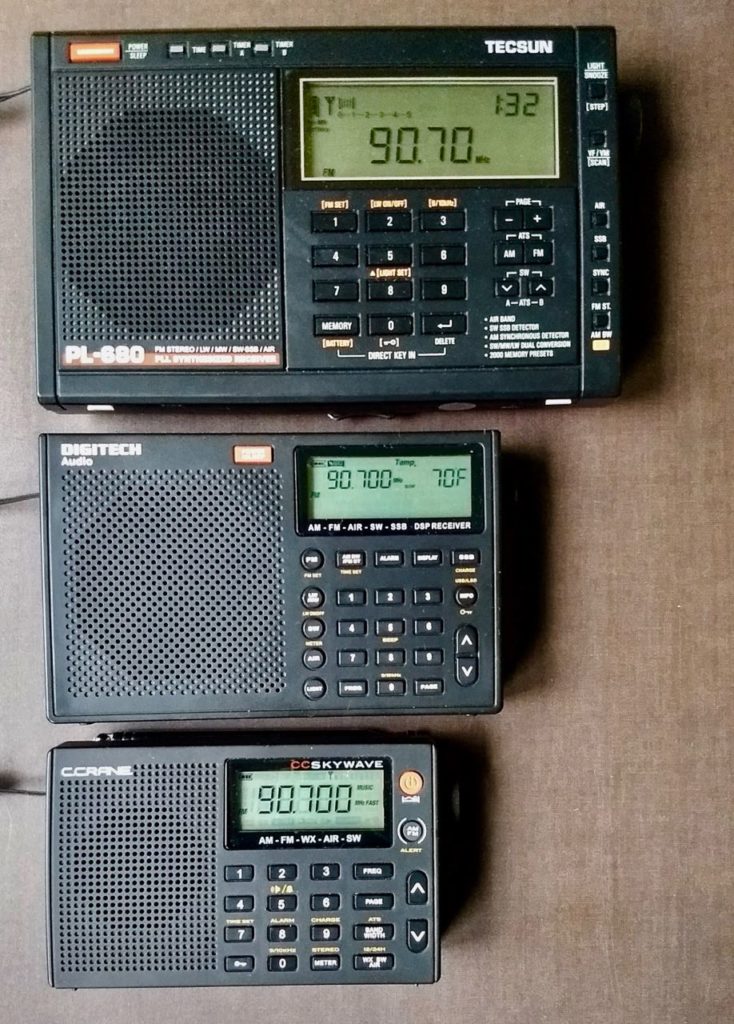
Comparing size: The Tecsun PL-680 (top), Digitech AR1780 (middle), and the C. Crane CC Skywave (bottom)
Unlike the radios mentioned above, the AR1780 does not include some sort of protective case or bag. I believe this is an omission for a radio aimed squarely at the traveler.
Fortunately, the plastic chassis of the AR1780 feels substantial enough. With the key lock engaged, the only likely problem that could arise from having no protective case is damage to the display, such as scratching.
The buttons all have a tactile feedback and seem to respond quickly enough, save powering up the radio, engaging the SSB mode, or changing bands, each of which takes a couple of seconds to engage.
I especially like the fact the AR1780 has, on the right, a dedicated multi-function tuning knob. One can turn the tuning knob to scan frequencies or press it to cycle through fast or slow tuning steps (or to turn off this knob’s function entirely).
The AR1780 also has a dedicated fine tune control––a tuning wheel just beneath the main tuning knob also on the right side of the radio (see image above). The only odd quirk about this is that this is where most radios have a volume control. Being a creature of habit, many times I’ve inadvertently shifted frequencies when I simply wanted to turn up or down the volume! The volume control, meanwhile, is in the same position on the left side panel of the radio between the antenna and earphone jack.
Speaking of volume, the AR1780 can provide plenty of it-––almost room-filling audio––via the internal speaker. Best yet, I like its balanced fidelity: mellow, with notes of bass, but ample treble when listening at moderate volume. The audio response curve is almost ideal for such a small package.
Something else worth noting: the AR1780 fits nicely in the hand. In general, it’s a great size for portable listening.
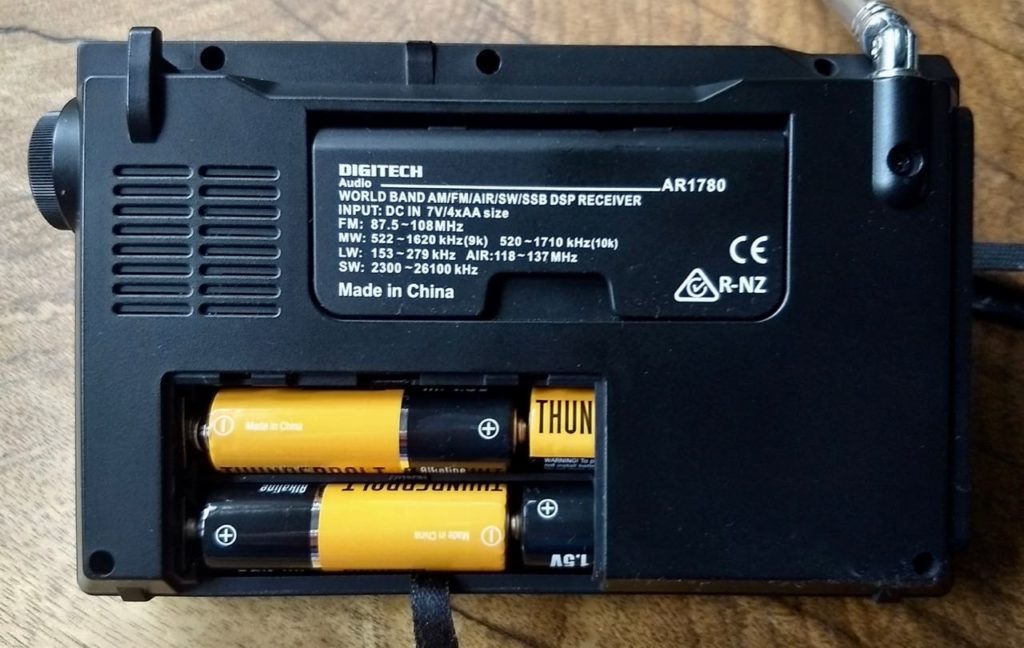
Major bonus for a travel radio: the AR-1780 is powered by standard, accessible AA cells. Note that the frequency range information silk-screened on the back stand is incorrect–shortwave coverage extends up to 29,999 kHz.
On the downside, however, one negative I noted shortly after beginning use: muting between frequency steps. In AM mode, this is not as distracting as in SSB mode. Muting makes band scanning a more tedious and fatiguing experience. Unfortunately, in this era of DSP-chip-based receivers, it seems muting has resurfaced.
Also, as with many other DSP portables, you can often hear “input” noise when pressing buttons. In other words, if while listening to one frequency I decide to key in another, I’ll hear a little clicking or buzz in the audio as each button is pressed. This is a very minor annoyance since it only happens when buttons are pressed, nonetheless, I thought it worth mentioning. I often wonder if it’s a result of poor shielding, something from which similar models suffer.
Performance
Over the past two weeks, I’ve had the AR1780 on the air almost every day. I’ve compared it with a number of receivers, but mainly The C. Crane CC Skywave, The CountyComm GP5-SSB, and even the Grundig G6. Below, I break down my notes by band.
AIR band
Let’s start with the “bonus” band: the VHF aviation band.
I’m sure there a number of readers who’ll never use this band, but I am not one of them. Personally, I really enjoy listening to aviation traffic, especially when I travel by air. Since the advent of the AIR band on ultra-compact radios, I no longer feel like I have to lug an additional scanner or receiver just to listen to the local air traffic control; that’s a plus.
Performance-wise, the AR1780 seems to be equal with the CC Skywave on the AIR band. Like the CC Skywave, the AR1780 has a squelch control––a fantastic feature, indeed. Simply tune the radio to your favorite aviation frequency, press and hold in the tuning knob on the side, and then use the tuning knob to adjust the squelch level. I find level 3 or 4 works well.
Note that unlike the squelch on the CC Skywave, the squelch control on the AR1780 actually carries over to the shortwave band. If you have squelch set on the AIR band, then switch to another band where squelch isn’t needed, you will need to turn it off. I never use squelch on the shortwave or mediumwave/AM broadcast bands; normal fading (QSB) can trick the squelch to open and close while tuned to a frequency.
Another convenient feature: press and hold the AIR button to start an automatic scan of the entire band. It’ll run through the AIR band once, saving any active frequencies. This is an ATS feature, so only makes one pass. I wish you could set it to continuously scan the aviation band in a loop, much as a traditional scanner would.
FM
The AR1780 does a fine job on the FM band. It easily received my benchmark FM stations and even decoded the RDS from one broadcaster about 110 miles from my home base.
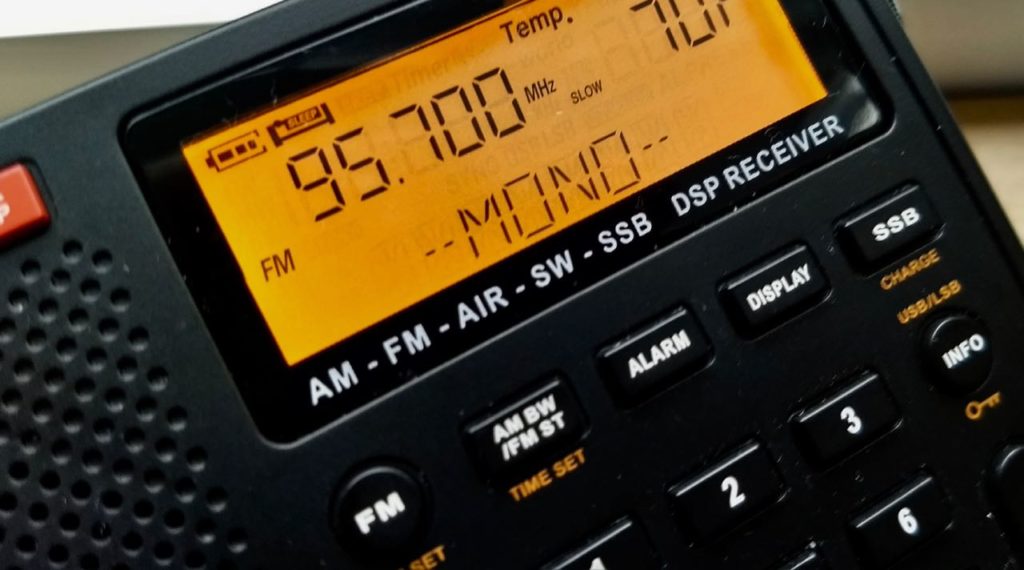
When listening to marginal FM signals, the AR1780 can be set to mono mode instead of default stereo mode.
What’s more, the internal speaker is exceptional at handling music––reasonably full fidelity given the limitations of the speaker size.
Longwave/Mediumwave
I’ll be the first to admit that longwave is not an easy band for me to evaluate. Here in North America, there are so few opportunities in the summer to log trans-Atlantic longwave stations. Indeed, unless I’m travelling to New England or the Canadian Maritime provinces, I never try to do so on a portable. I leave TA longwave DXing to my SDRs and tabletops back home where I can listen with the assistance of a large antenna.
But when I travel to Europe, longwave is a must, so my travel radio needs this capability. Based on my ability to receive benchmark LW airport beacons, I’m going to assume the AR1780 will do a fine job receiving European longwave stations while in Europe.
Likewise, the AR1780 should serve you well for both daytime and nighttime reception on mediumwave. Fortunately, switching between 10 and 9 kHz steps is simple: with the radio powered off, simply press and hold the “0” button to toggle between these steps.
On longwave and mediumwave, you can also use SSB mode (both upper and lower sideband). This could come in handy to reject adjacent signal interference on MW.
Likely an oversight on the part of the manufacturer, you can even engage the squelch feature, though why you would on LW and MW, I’m not sure.
Of course, with the fine-tuning control, you can navigate both bands in 1 kHz steps should you desire.
In short: the AR1780 is adequately sensitive on mediumwave and likely on longwave, as well. I wouldn’t rely on it for any serious DXing, but for a travel radio, it will serve you well.
Shortwave
Being first and foremost an avid shortwave listener, I spent the bulk of my AR1780 evaluation time on the shortwave bands and I’m overall very pleased with its performance.
In almost all of my comparisons on the shortwave bands, the AR1780 had a slight edge over its competition, namely, the CountyComm GP5-SSB, the Grundig G6, and the C. Crane CC Skywave.
To be clear, though, it was a very slight performance edge which I think may be attributed to the fact the AR1780’s telescopic antenna is longer, giving it a bit of gain over its competitors. For example, the AR1780’s antenna is about 17.7 cm (7 inches) longer than that of the smaller CC Skywave.
Still, placed on a table and not held in the hand, the AR1780 was able to pull in weak signals better than its competitors. I also compared it with the the Tecsun PL-680––one of my most sensitive shortwave portables––and, not surprisingly, the PL-680 outperformed the AR1780.
Again, I should stress that the sound from the AR1780’s internal speaker is more pleasant to listen to for extended periods than that of its smaller competitors.
SSB
Single sideband reception on the AR1780 is pretty impressive for a radio in this price class. On my particular unit, I found that the fine-tuning control was almost always needed to budge the frequency a few tenths of a kilohertz, even when I knew a particular signal was exactly on frequency. My Grundig G6 always had the same problem––indeed, sometimes in SSB mode, I had to listen “up” as much as 2 kHz on the G6.
The fine-tuning control works very effectively in SSB mode, nonetheless. Audio is quite pleasant, although the noise floor is not quite as low as it is on my larger portables like the Tecsun PL-680, PL-880, and the new S-8800. In my comparison tests, the AR1780 was slightly more sensitive than the CountyComm GP5-SSB, and about equal to that of the Grundig G6.
Click here to watch a short video of the AR-1780 in SSB mode.
In short? SSB is a welcome, capable addition on this compact portable.
Summary
Every radio has its pros and cons, of course. When I begin a review of a radio, I take notes from the very beginning so that I don’t forget my initial impressions. Following is the list I’ve formed over the time I’ve been evaluating the Digitech AR1780:
Pros:
- Display is clear and easy to read
- Time is always present via display button
- RDS info scrolls on lower line
- Backlit display easy to read
- Viewing angle good, save from top
- Dedicated fine-tuning control (even on FM)
- External antenna jack
- 9/10 kHz selectable MW steps
- Time set is simple
- Adjustable bandwidth in AM and SSB
- Decent battery life from four standard AA cells
- Audio from the built-in speaker has better fidelity than other radios in this size
Cons:
- No bag or carry case
- DC input voltage is an odd 7V
- Muting between frequency changes, especially annoying in SSB
- Sometimes keylock activates backlit display permanently
- Scan function on AIR band doesn’t loop, it’s an ATS pass only
- My AR1780 had incorrect information silk-screened on the back regarding frequency coverage
- Minor: sluggish response when switching bands or modes
Conclusion
Is the Digitech AR1780 worth the price? I think so. For $129.00 AUD (roughly $103 USD), you’re getting a full-featured radio that is, by and large, a pleasure to operate. It has its quirks, but so do so many ultra-compact portables in this price bracket. It’s certainly worth considering if you live in Australia or New Zealand.
I’d like the AR1780 to be a little more refined:
- No muting while band scanning in AM or SSB modes
- A proper scan function to accompany squelch on the AIR band
- Squelch that doesn’t carry over when bands are switched
What I do think is impressive for this price:
- Overall smooth audio from the internal speaker
- Dedicated external antenna port
- Dedicated tuning and fine-tuning controls
- Useful screen which displays time and even RDS information
- Sturdy, relatively long telescoping whip antenna
These are features that make the AR1780 stand out among radios in its price class.
Is it a benchmark performer? No. But it does the job rather well for the price, and frankly, I think I’ll use this during travel occasionally, even though I have several other smaller portables.
Why? Well, for one thing, this radio has better audio fidelity from the internal speaker than most of my ultra-compact portables. When I’m in a hotel and listening to a local radio station or even a shortwave broadcaster that’s punching through typical hotel RFI, I’ll appreciate the richer, mellower audio. Many of my smaller portables are lacking in this respect, thus I usually end up listening through headphones.
In fact, the only thing this little receiver lacks for us here in North America is NOAA weather/Environment Canada radio frequencies––but it’s no wonder it’s not included, as it was never intended for this market. But I’m glad the step size on the AM broadcast band can be switched to our 10 kHz spacing, which makes it useful here in North America.
In short, the AR1780 has exceeded my expectations––though admittedly, it may be because it was my first experience with a Digitech radio and I had heard so many lukewarm reviews of previous models.
Regardless, I’m happy I paid a small premium to order this little rig from Down Under.
If you’re a radio enthusiast in Australia or New Zealand who wants the best performance in a portable, and doesn’t mind a larger radio, then do splurge for the Tecsun PL-660, PL-880, or Grundig Satellite. There is a dedicated Tecsun distributor in New South Wales and there are always, of course, retailers on eBay and one of my favorites, Anon-Co in Hong Kong.
And if you’d like to order a Digitech AR1780 outside of Australia or New Zealand, you can purchase from this eBay seller, as I did.

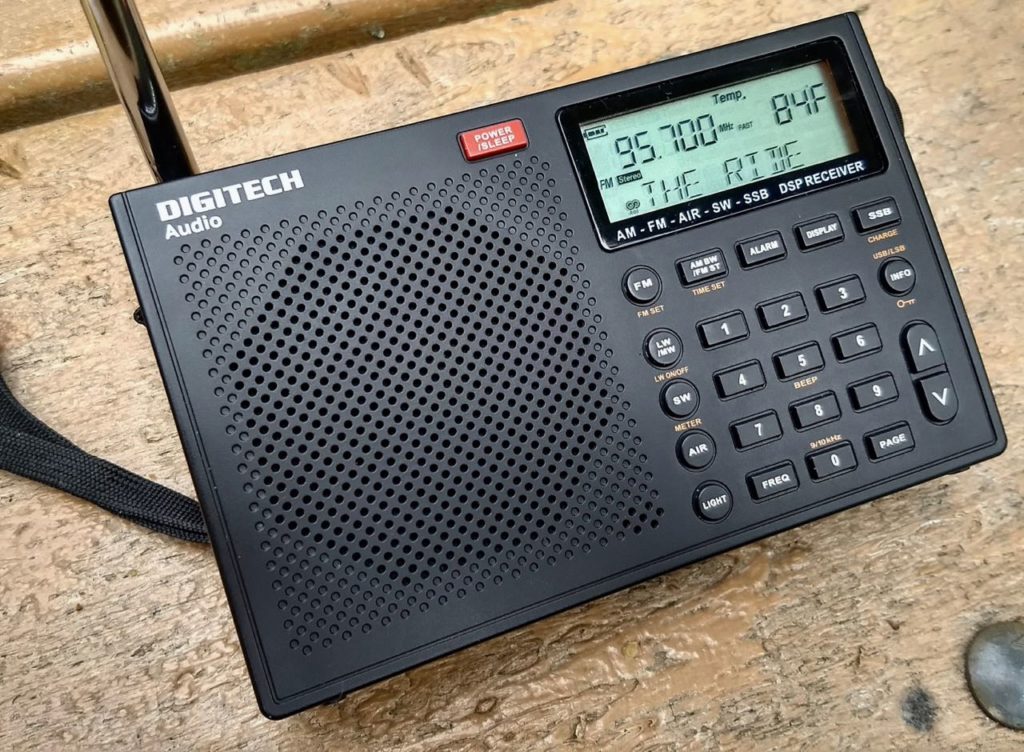
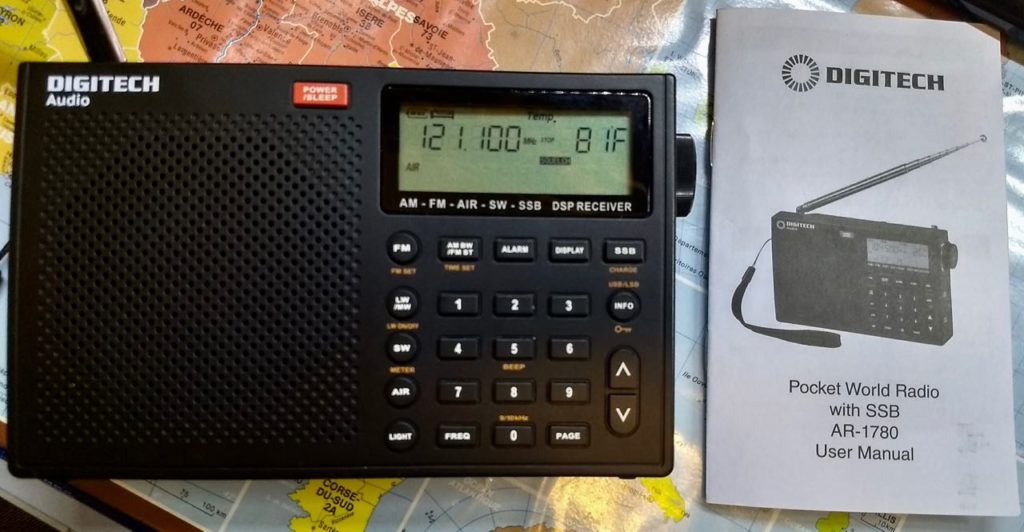
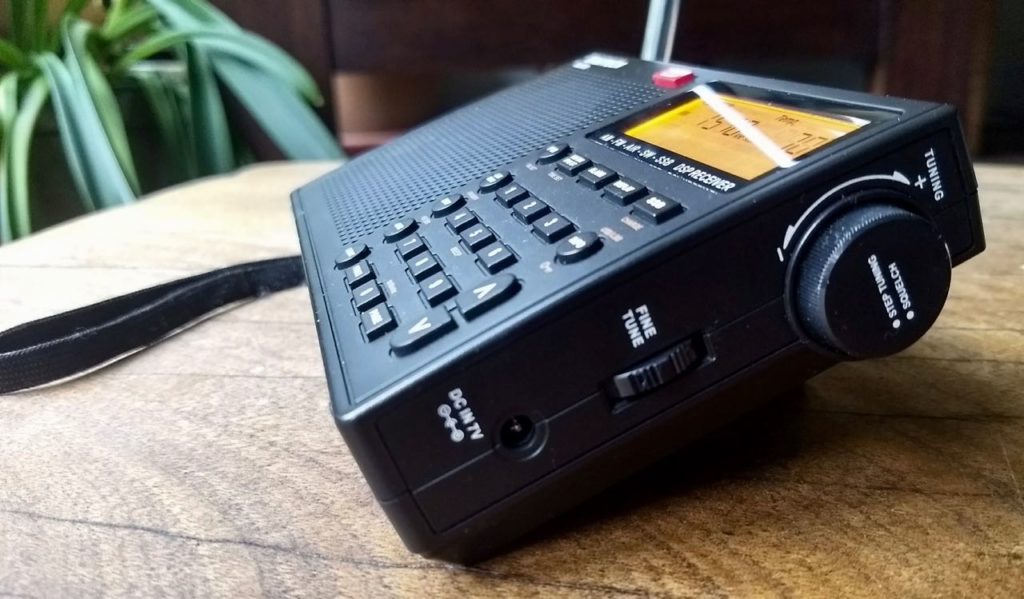
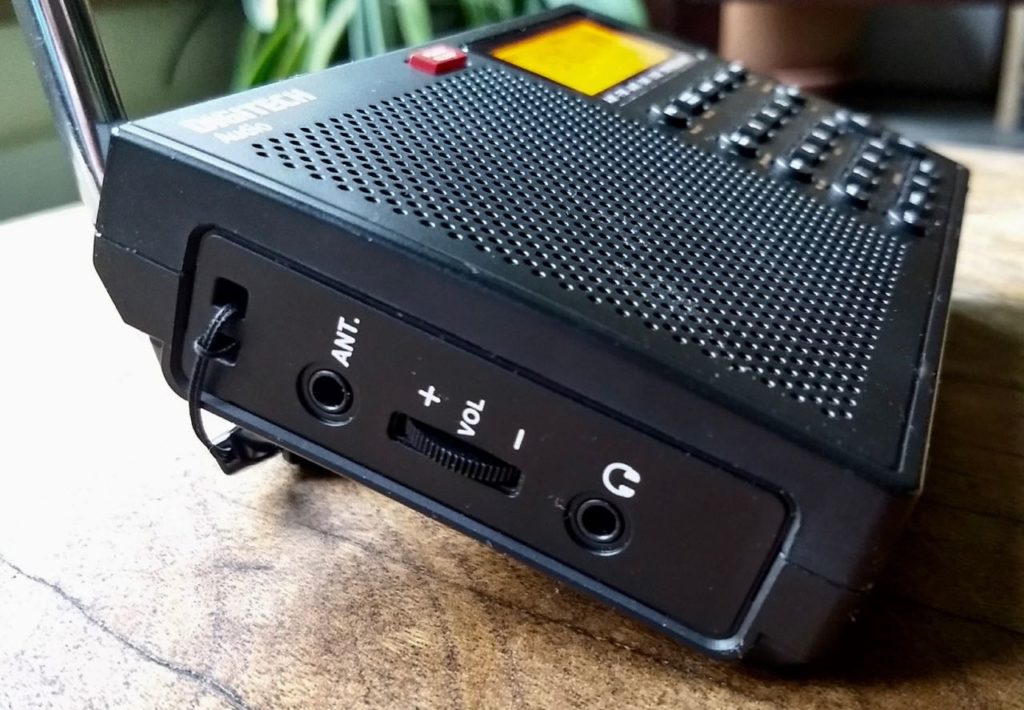

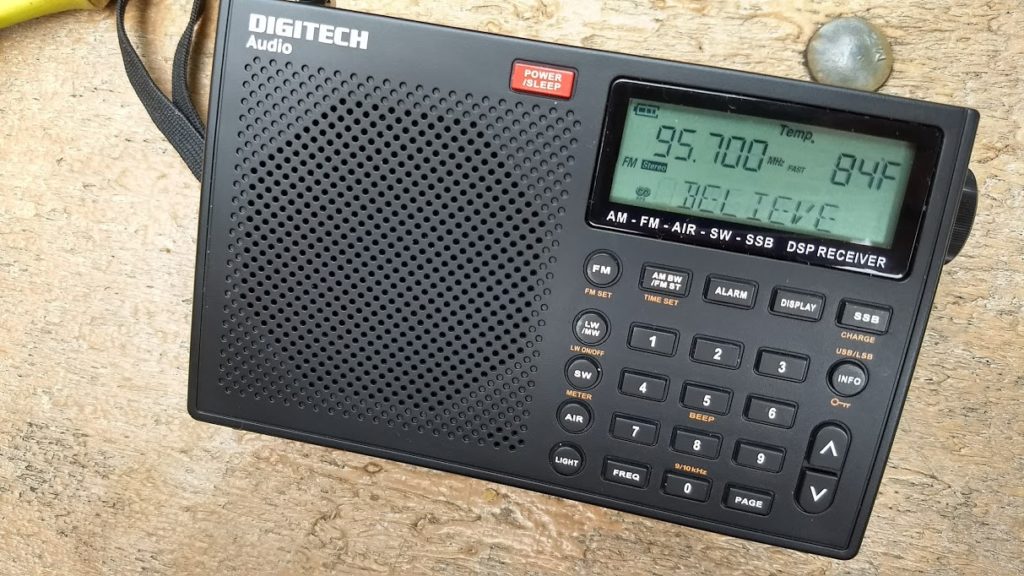
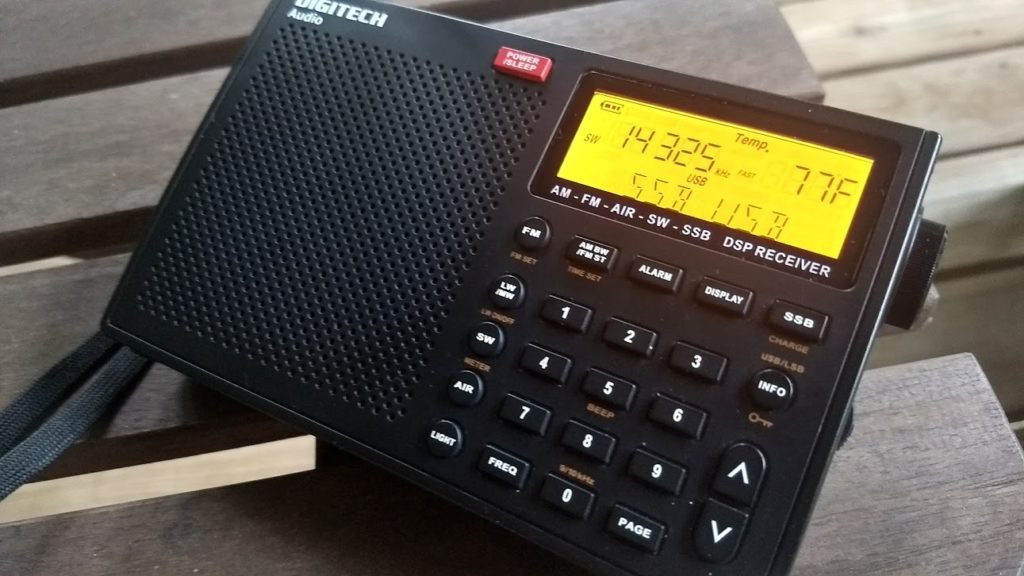
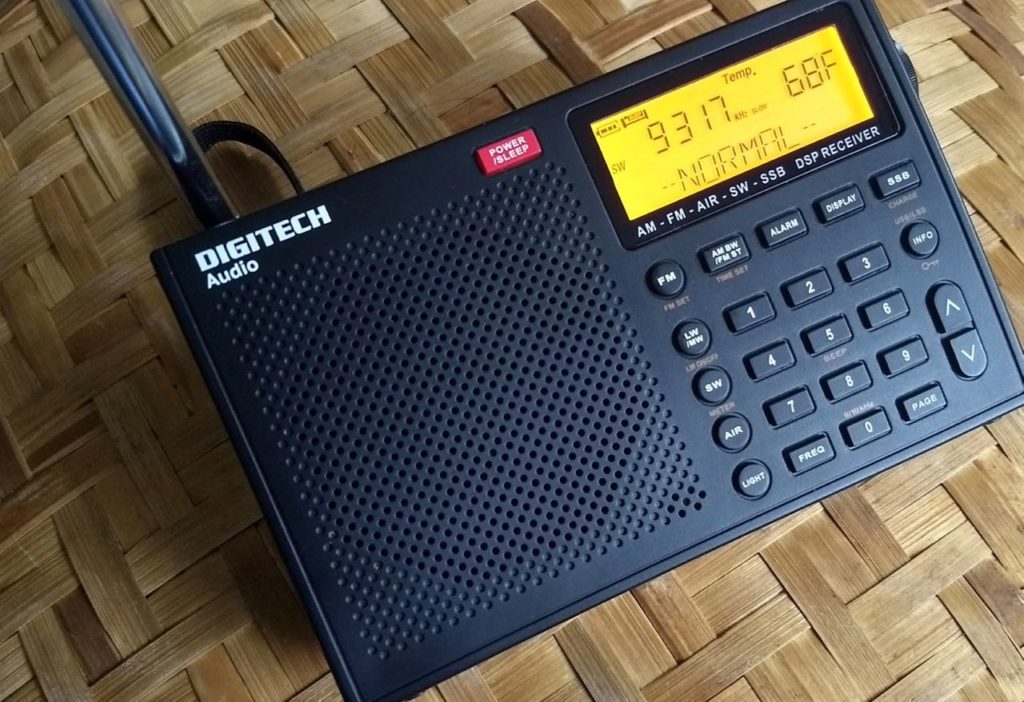
I have had an AR-1780 for about a year now and it is the one I usually grab. It does everything well. But I had a long standing problem with the antenna. It was VERY stiff in rotation. It was so tight that I thought at first it was not designed to rotate at all. Over time the torquing of the base broke the plastic of the case that supports the antenna and tore the connection from the antenna to the circuit board loose. . This is totally internal of course. I have opened it up and I will be able to repair it with no damage noticable from the outside. But it is something to look out for. Not sure why it is so tight. Even some oil did not help. Might clamp the antenna in a vise and the it’s base in a drill chuck so I can rotate it continuously for a while and loosen it up a bit.
I’ve got a comment after using it a few times in the past year. I live next to an AM transmitter, so I have to wait for a power outage to test it.
Overall, it would be excellent value for the price, but for one fatal flaw-it eats batteries. Even when turned off, it entirely drains high capacity non-rechargeable batteries in under 48 hours. Wiring in an exterior battery pack with an actual on/off switch, this radio might be excellent for occasional use. The programming of memories is awkward, even compared to the venerable and ancient DE1103. The bandwidth choices are excellent. The only other addition I could wish for (aside from a real on/off switch, better memory management and switches) would be a variable FM filter.
Have now owned an AR1780 for two months. When recharging the 4 batteries, the charging function goes on well past the nominal 10 hours cut off. I do not wish to damage the batteries by leaving them on charge for too long. My AR1733 dutifully stops charging at 10 hours or so, but it has 2 batteries. How long can I safely leave the batteries on charge? And should it stop charging automatically?
Thanks for an excellent review. I only bought mine yesterday, from Jaycar in Perth, at $109.00.
I agree with all of your findings. Lack of a protective case is a disappointment, so I guess I will stick it back in its substantial packaging box for travel, until that falls apart.
The manual is hard to read, deficient in some areas, as you note, and I had to use a hand-lens to read the numbers on the diagram of the radio’s functions and buttons and the other graphic of the screen display items and icons is a useless mass of blurs.
Otherwise, it seems to work and sound just fine, for now. I Ioaded it with 4 x Lithium rechargeable AA batteries, as I routinely recharge all my batteries in the house. I’ll be interested to see if they last any longer than the twin AA’s in my old Panasonic RF-B11 which still works fine but has an annoying tendency to make scratchy sounds when I turn the manual (and only) tuning knob, hence this new purchase, with AIR as a bonus, which I enjoy seeing I am a pilot.
I guess I came looking for reviews as a kind of justification for my purchase. It achieved that!
Good job.!
I have a Digitech AR 1747 shortwave radio and have an interesting problem. If I turn it off when I’ve finished listening, and then turn it on some time later what I get is loud static. However if I turn the sound down and leave it for an hour it’s suddenly tuned back in again and the set works perfectly. Have gone through the manual with a fine tooth comb and have done everything by the book but still the problem persists. How I have overcome this is to not turn the radio off but to just turn the sound down so when I want to listen to the radio I don’t turn it on but just turn the sound up. Perhaps someone out there is able to give me some kind of tip to get me back to normal useage. Thanks from Mel Jones
My Digitek AR-1780 DSP multiband portable radio was purchased from MAD Electronic from Austrailia and I paid $110 plus $35 for shipping. The radio has descent sensitivity and selectivity but also has some things that I did not like about it.
1) Cheaply made buttons – One day it stopped working so I installed new batteries and it still did not work. I then tried restting the radio which also did not work. The next day I looked examined the radio and noticed that the ” PAGE ” button was pushed in. I carefully tried to pry it loose but it would not bulge. I then opened up the radio and for some odd reason it poped out and now the radio works fine.
2) On SW ( shortwave ) you have to press the frequency button two times, once before entering the freq and again after you enter the frequency. The frequency button will most likely be the 1st button to wear out.
Conclusion: The radio works well but the cheap buttons have a tendency to get stuck.
Who makes this? Can we possibly wheedle the manufacturer into adding a few improvements in bandwidth selection or similar?
Hi Thomas,
A great review on the AR-1780, well done! I’m thoroughly impressed by mine and I have to say, I’ve done considerable “head to head” comparisons with other portables and found that the AR-1780 outperformed all of them. I was surprised that the recovered audio was much better than the Eton Satellit Executive and the annoying muting when tuning was on par with the Eton. MW was much better than most.
Like the Eton, when on SSB, there was negligible muting while tuning.
Like all Chinese portables, I’d say there is considerable variation with QC and perhaps I’ve been lucky enough to jag a good one as apart from the muting issue, I really can’t fault it.
I still like the older analogue portables though, the Panasonic RF-B65 is a cracker of a radio and extremely well built.
Keep up the great work.
Cheers from Australia…………. Phil vk2gjf
Just a little add-on. When I got the radio, I was super keen to play even though an hour from home. I was given a set of batteries by Jaycar, something called Eclipse super alkaline which you can find on their web site. They died last night, after an estimated 30-45 hours use. I know some have commented on this radio’s heavy use of batteries. As they lost charge, I did notice a tendency for the radio to dip a bar while scanning, then recover on finding a signal.
I also noticed that when they did die after a lot of scanning (I don’t have a lot of signals here, so scanning through the range is common), I left it off and the batteries recouped some charge. I then listened for 30 minutes or so before changing batteries. I’m not THAT cheap with batteries, I just thought a little informal experiment would stop me getting out of bed. I sometimes listen in bed, after the PCs, TV and such are off. Not sure it makes a big difference to noise.
Now, the radio has some old NiMH rechargables, I’ll try and let you know how they last, before I put them back into the radio they belong too (an AOR handheld awaiting my time to fix it). I can also test it with Energizer 2450 mAh NiMH’s when they are charged.
Hi, David,
Yes, one reader had contacted me complaining about how quickly the AR-1780 chews through batteries.
I’ve had the AR-1780 since August (I believe). I only recently replaced the batteries and that was from using the radio. It has very little phantom load to pull down the batteries while the radio is turned off. I’m impressed with with the AR-1780’s battery performance.
Cheers,
Thomas
Hi, Thomas, excellent review of the DigiTech AR-1780!
However I have encountered a stuck rotary tuning knob on the 1780, that occurred today May the 1st 2022.
I searched the web for anyone else experiencing the same problem, and no succes, and this is very perplexing as I like the fast slow tuning function.
I’ve also not been able to find a tear down video of the 1780 and I’m this very hesitant to take the unit apart for fear of breaking something. Especially as I am visually impaired.
Is there anything available online regarding a teardown procedure?
PS I’ve been SWLing since the mid-60s, starting with a Knight kit 2-tube regenerative (“squealer”) SWL rcvr (my father help me build it in the mid-60s; very sensitive but unstable!), then a RS DX160 (lots of amazing DX during the cold war era, a RS DX-392 (still works), a Kenwood R-600 tabletop sel rcvr (lots of birdies), a RS DX 398 (no longer working), and another DigiTech 1780.
Hi, I have just got the AR1780 and comparing with others I’ve had especially the PL660 and PL880 beats them both. Firstly the ssb does have an annoying mute when running, but the sensitivity and sound quality is fantastic, and that goes for all bands. The airband sensitivity is also impressive with excellent squelch. Long wave sensitivity is low for doing. Tuning is without the quirks of the PL880 and great on general coverage bands. Headphones sound great. I’ve opened mine and the build quality is good with band trimmers and transformers. If anyone has acquired the circuit diagram could the post it on the Google site. If you want a radio with a lot of bang for your bucks, then look no further.
Hi all,
I’ve been using one of these in Australia (southern Tasmania) for about 5 weeks. In the last 10 or so days, I’ve got a 26m long wire hanging fairly reliably on a N-S bearing. My history is that I trained as a marine radio operator in the early 1980s, but worked in commercial IT; so no real radio theory and I only just started listening to SW again since being a volunteer in the South Pacific in the mid 1990s.
Now, to this radio. I quite like it although it has quirks I wish it didn’t have. In the 1990s, I used a Panasonic RF-B45 and it was rock solid until it died a few years ago. Every now and then, I try to fix it, but no luck…
Reception here is quite limited and that’s how I discovered the first quirk: when it scans at SW frequencies it skips. For example it seems to jump from about 9400kHz to 11000kHz. I also have an old Jaycar AR1747 and it also skips when scanning. They also skip from about 26100 and restart at 2300kHz. Whether it’s a design feature, or a fault, I don’t know. Other than that, I think it’s a great radio so far. The AR1780 lets you type in the frequencies it skips, it just won’t scan them.
Until I start to find some reliable interesting stations (I’ve picked up some Radio NZ Int and BBC World Service), I’m doing a fair bit of listening to WWVH in Hawaii. Sure listening to the time isn’t as fun, but it serves a purpose when comparing radios side by side. WWVH broadcasts on 2500, 5000, 10000, 15000, 20000 and 25000 kHZ I think. I can usually get 15000 subject to propagation at any time.
Until I gave it away, I also had a Jaycar AR1733 and it also skipped; they all probably share a common chip and skip the same frequencies although I haven’t checked closely. This radio looks identical to the Skywave many of you mention. The old AR1747 also had a Crane equivalent, and this was helpful as Crane’s manual was much better!
On the first tests with my long wire antenna, the AR1733 had a fairly clear signal, beat the old AR1747 and the AR1780 was the best. The AR1747 is hard on its D batteries, so may have been handicapped. As it got dark, I found the signal didn’t change much on 15000 kHz with any radio, but only the AR1780 would find 5000 kHz while scanning (since it skips over 10000 kHZ). The AR1747 does not have a keypad, so all tuning is by a dial or the scan function.
Oh yes, a hint I’ve learned for Golan. I gained the habit of punching then the desired frequency, then . The precludes the need to type in leading zeroes and trailing zeros. For example, I get WWVH by 5000 , while 15000 is 15000. This may go all the way back to the RF-B45, so I’ve had time to acquaint myself.
Next is batteries, the AR1733/Skywave needs 2xAA batteries, the AR1780 takes 4xAA as did the RF-B45. I haven’t yet run down any batteries in the AR1780 yet, but all my radios with 4 batteries have always worked better than those with only two. So the extra size is worth it, and the AR-1780 is a fair bit smaller than the old RF-B45. The AR1747 was an exception, it took 4xAA and 4xD and AA’s were almost a waste of time in it. But hey, it’s a telephone book size radio with a big speaker; so I keep it plugged in as much as I can.
Anyway, it’s almost 4PM here, we’re on DST so it’s GMT+11 hours. The bands start opening up soon so I want to get back to the radio. I’ve still got a lot of work to find the who, what and where of SW broadcasters. At least logging them is easy these days, when you tune into something, just point the mobile and it and make a movie!
I bought my radio from MAD electronic in Australia on Nov1 I got my radio on
Nov11 in Michigan USA it was pretty fast.
I found AR1780 very good and much more sensitive on shortwave, AM and F M
compare to my DX398 and Degen DE1103
The only con is it has very poor written user maual.
If I was on the market for a portable SW this would be high on my (very) short list. It is capable of SSB. But having a collection of various capable portables, something needs to stand out, like a complete schematic and service manual.
I don’t know why you would suggest an Eaton Satellit over this. It sounds very much like it IS a Satellit minus the syncronous detection and all page buttons but with an added fine tuning control. Both have squelch accessed exactly the same way, the filter steps on SSB are identical. The syncronous detection is horrible on my Satellit so it is useless anyway, and if you don’t need the 100 pages of seven frequency slots then the AR-1780 sounds a good bit more sensible. And the air band scan on the Satellit can run continuously….. until it hits something, be it noise or a true signal. Then it stops. It does not continue, so the difference isn’t much. Neither is what we would want.
I purchased an AR-1780 on the strength of the review. To be frank, I was surprised with the results. True it has a few quirks with the need to use the frequency key when entering a frequency with the keypad and the need to place a leading zero when keying in a frequency less than 10 MHz and a zero at the end when using FM.
Like the review I found the squelch operates on all bands, to me this is a bonus. I’m into FM DXing so I can see the radio sitting on a prime DX frequency (assuming I can find a adequate frequency amongst the locals) with the radio plugged into a power supply.
I’ve found the sensitivity good especially on the MW band, it is comparable to my Kaito KA1103. It does a good job on the new Radio Fiji 1 558 kHz outlet (I’m in Christchurch, NZ).
As regards birdies, I haven’t gone looking for them but I have found one on 1180 kHz.
The only gripes I have about the radio is a crackling sound when pressing the keypad and the wrist strap which could be just a little bit bigger.
Over all though, for the price it is a very good radio.
Having to press FREQ before entering a frequency is an annoying quirk indeed. My muscle memory is to enter a frequency first and then press something. Speaking of, if you press FREQ after entering a frequency it negates the need for the leading/trailing zeroes.
Couple of questions. Any additional info on problems with power drainage? This was brought up in an earlier post and I saw someone else complain about it on Amazon AU.
Also curious if anyone has this radio and the Grundig G8 (Tecsun PL-300WT) – how do they compare in size? I put my G8 up against the Skywave and it looks similar to the size difference between the AR1780 & Skywave.
Finally, I know I have this is in the comments above, but curious how to contact Jaycar directly for getting this unit for the sale price shipped to the US. I sent them a message through Ebay, emailed them though their contact page – but no response. Thanks!!
I haven’t done any scientific measurements regarding battery usage so I can only anecdotally report that I’ve been listening to my AR1780 a great deal using some generic batteries that were kicking around in my desk drawer. So far, no problem.
I called Jaycar at +61 2 8832 3100 to order mine. Couldn’t have been easier.
Received an email from Jaycar with a toll free US number. Very nice people. …….and mine is on its way!
No mention here of the bad birdies present, as seen in the VK3YE You tube video ?
He saw some bad ones on 40m / 20m, and are there any others ?
I’d be darn annoyed if I bought this receiver after seeing this review, only find it was full of birdies ?
Can we have a proper check please – I for one would sure appreciate it.
Thanks.
Hi, Paul,
I’ll try to dig through t he 20/40 meter bands and see if I hear any serious birdies. I know that there were no major birdies on the broadcast bands.
-T
Does anyone know who actually manufactures these radios? Does the manufacturer have a web site? And are they sold under any other brand name?
BTW, Jaycar will indeed ship to the USA if you contact them. The terms are:
This product is on special now until Nov 26 2017. Please see the following price for the order.
AR1780 x 1 $109.00 AUD
Shipping $25.00 AUD
Total $134.00 AUD
That’s about $103.25 USD … better than the $135 eBay price.
Troy, what is the best way to contact them from the US? Email or phone?
Great review, thank you.
I live in Australia and I already own the Eton Satellit (the portable one), a few tecsuns (880, 660, 600 + others) and the G6.
I’ve been really impressed with the Eton lately, I had no problems with RFI in a hotel I stayed at lately, in fact I could easily receive my local ABC from over 2,000kms away on MW at night.
Anyway I’m considering buying another small portable for travel, would you go for the skywave (I can order it over amazon) or the AR1780? There is hardly any difference in price, even after a conversion to AUD for the skywave.
Correction G3 is the one I have that was my goto travel unit until I got the new eton
This video: https://www.youtube.com/watch?v=V418wU0zvKg suggests I shouldn’t bother with the skywave at all (and I might never travel to the US anyway which is the only place NOAA would be useful). I can’t work out whether it’s supposed to be for or against though.
The AR1780 is cheaper, and I could pick it up today if I want. The Skywave is smaller and lighter though. Hmm…
As I said in an earlier post, the AR1780 is only slightly larger than the Skywave and given that it has SSB, an external antenna input and RDS and the Skywave doesn’t have any of those features, I would recommend you get the AR1780.
Thanks. I went down today at lunchtime and bought one. It is a small little radio alright, the wrist strap will be handy (I have a few Sangeans as well and they don’t usually come with wrist straps)
This is for my regional/rural travel and I’m taking a trip tomorrow as it happens so I’ll test it out tomorrow night. For travel to capital cities where I’m staying in a high rise hotel, I have DAB+ radios, including the Sangean DPR-202BT (and that thing sounds GREAT)
Excellent review, Thomas.
When I saw yours last month at Mount Mitchell, I was quite impressed by its performance (and features). The **only** thing about the AR-1780 that struck me was its size. Exactly what is it trying to be? In my opinion, it is too big to be a [true] pocket portable like the Skywave & the discontinued G6, however it is also too small (or maybe I should just say “smaller”?) to be a true compact portable like the E/G-5, G-3, DE1103, PL-6xx, PL-880, Sony ICF-7600GR, Eton Satellit/Executive Satellit, etc.
It’s in a class by itself – and that’s not necessarily bad – it’s simply different [unique].
The AR1780 (no dash on the radio or the box) is only a smidgen (I like to keep things scientific, see) larger than the Skywave which itself is only a smidgen larger than the G6. So that’s what, two smidgens? Hardly worth quibbling about.
Jokes aside, when sat between a G6, a Skywave, a PL-880 and an ATS-909x, the AR1780 seems to fit in with the smaller, more easily pocketable radios.
Sorry for the hyphen 🙂 Not “quibbling” … I looked at all three & I picked-up and held all three in my hand … it just seemed bigger (maybe the weight and thickness had something to do with it) … but that was simply a tangible sense I had with it, that it was slightly too big to be a true “pocket” and it was smaller than the standard “compact portable” class (“herky” … solid … built like a mini-tank & I think that’s good). Again, “not necessarily bad”.
I enjoyed playing with it and I like its features. SSB seemed to be great, the sound was attractive (for lack of a better term), and the fact a radio like that has multiple BW settings rather than Wide/Narrow is great.
I’d definitely buy it – and the current Jaycar price shipped to the USA at around $103.25 USD is VERY reasonable.
Sorry if that came off as rude; it was my lame attempt at humour.
P.S. The more time I spend with this little radio, the more I like it.
Thomas
Excellent review! You mentioned the audio fidelity is better than most ultra-compact portables, how would you compare the AR1780 audio fidelity to the PL-660? Which receivers in your collection sound similar? Again thank you for an excellent review!
Steve
Thank you for the thorough review. As a new owner of an AR1780 I find that I’m in agreement with everything you wrote. It really is an impressive radio, especially when considering its size and price. Speaking of price, Jaycar recently had the AR1780 on sale for $100 AUD so I contacted them and asked if they would ship to Canada. They were most accommodating and two weeks later I had an AR1780 in hand for a total of about $123 AUD. To put that price into context, it’s about HALF of what my as yet to be shipped C.Crane Skywave SSB cost. The AR-1780 represents outrageously good value.
I bought both the Digitech AR1780 and C.Crane Skywave SSB because they’re so similar and I couldn’t resist the temptation of a head-to-head comparison. In a previous bout, the non-SSB Skywave bettered the seeningly identical Digitech AR1733. Will history repeat itself? I can’t wait to find out which radio will become my new, always with me companion. Barring a major difference in reception quality, I suspect the AR1780 will win. I’ll miss the Skywave’s WX bands but RDS and an input for an external antenna are far more appealing to me.